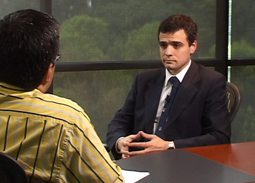About this videoRobert S. Pindyck introduces the theory of real options and other related subjects. He begins by defining a financial option, which can be subdivided into a call option and a real option, the latter focusing on the application of the capital investment theory through the option theory method. He exemplifies this by stating that a hypothetic company, that is considering a capital investment to build a factory, builds it and uses its cost as the exercise price of the action. He also comments on the net present value (NPV), illustrates the costs of investments and describes the risks implied in oil investments. He talks about patents, the value of a company, and shares examples of both subjects. Furthermore, Pyndick analyzes the decision of managers when considering options, how uncertainty is often underestimated and through the interpretation of an option graph, he indicates the appropriate time to invest. |
|
CreditsIntroduction to the Theory and Application of Real Options
| |











